
The National Book Foundation has announced the winning titles of the 74th National Book Awards. Books published in the U.S. between Dec. 1, 2022, and Nov. 30, 2023, were eligible to be taken into consideration for the honor. The submitted titles are sorted into five categories: Fiction, Non-Fiction, Poetry, Translated Literature, and Young People's Literature. Ten titles were placed in the longlist of each category in September. On Oct. 3, 2023, the five finalists from each category were announced.
Want more award-winning titles to add to your 2024 TBR? Browse all the previous winners of the National Book Awards from 1950 through 2022.
Fiction
Winner
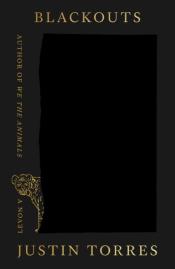
Blackouts: A Novel by Justin Torres
Out in the desert in a place called the Palace, a young man tends to a dying soul, someone he once knew briefly, but who has haunted the edges of his life. Juan Gay—playful raconteur, child lost and found and lost, guardian of the institutionalized—has a project to pass along to this new narrator. It is inspired by a true artifact of a book, Sex Variants: A Study in Homosexual Patterns, which contains stories collected in the early twentieth century from queer subjects by a queer researcher, Jan Gay, whose groundbreaking work was then co-opted by a committee, her name buried. As Juan waits for his end, he and the narrator trade stories—moments of joy and oblivion—and resurrect lost loves, lives, mothers, fathers, minor heroes. The past is with us, beside us, ahead of us; what are we to create from its gaps and erasures?
Inspired by Kiss of the Spider Woman, Pedro Páramo, Voodoo Macbeth, the book at its own center and the woman who created it, oral histories, and many more texts, images, and influences, Justin Torres's Blackouts is a work of fiction that sees through the inventions of history and narrative. An extraordinary work of creative imagination, it insists that we look long and steady at the world we have inherited and the world we have made—a world full of ghostly shadows and flashing moments of truth.
- Finalists
- Image
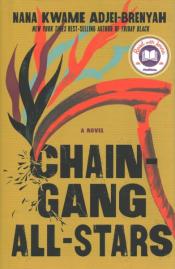
Chain-Gang All-Stars by Nana Kwame Adjei-Brenyah
Two top women gladiators fight for their freedom within a depraved private prison system not so far-removed from America's own.
Loretta Thurwar and Hamara "Hurricane Staxxx" Stacker are the stars of Chain-Gang All-Stars, the cornerstone of CAPE, or Criminal Action Penal Entertainment, a highly-popular, highly-controversial, profit-raising program in America's increasingly dominant private prison industry. It's the return of the gladiators and prisoners are competing for the ultimate prize: their freedom.
In CAPE, prisoners travel as Links in Chain-Gangs, competing in death-matches for packed arenas with righteous protestors at the gates. Thurwar and Staxxx, both teammates and lovers, are the fan favorites. And if all goes well, Thurwar will be free in just a few matches, a fact she carries as heavily as her lethal hammer. As she prepares to leave her fellow Links, she considers how she might help preserve their humanity, in defiance of these so-called games, but CAPE's corporate owners will stop at nothing to protect their status quo and the obstacles they lay in Thurwar's path have devastating consequences.
Moving from the Links in the field to the protestors to the CAPE employees and beyond, Chain-Gang All-Stars is a kaleidoscopic, excoriating look at the American prison system's unholy alliance of systemic racism, unchecked capitalism, and mass incarceration, and a clear-eyed reckoning with what freedom in this country really means.
Image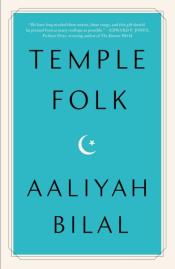
A groundbreaking debut collection portraying the lived experiences of Black Muslims grappling with faith, family, and freedom in America.
In Temple Folk , Black Muslims contemplate the convictions of their race, religion, economics, politics, and sexuality in America. The ten stories in this collection contribute to the bounty of diverse narratives about Black life by intimately portraying the experiences of a community that resists the mainstream culture to which they are expected to accept and aspire to while functioning within the country in which they are born.
In “Due North,” an obedient daughter struggles to understand why she’s haunted by the spirit of her recently deceased father. In “Who’s Down?” a father, after a brief affair with vegetarianism, conspires with his daughter to order him a double cheeseburger. In “Candy for Hanif” a mother’s routine trip to the store for her disabled son takes an unlikely turn when she reflects on a near-death experience. In “Woman in Niqab,” a daughter’s suspicion of her father’s infidelity prompts her to wear her hair in public. In “New Mexico,” a federal agent tasked with spying on a high-ranking member of the Nation of Islam grapples with his responsibilities closer to home.
With an unflinching eye for the contradictions between what these characters profess to believe and what they do, Temple Folk accomplishes the rare feat of presenting moral failures with compassion, nuance, and humor to remind us that while perfection is what many of us strive for, it’s the errors that make us human.
Image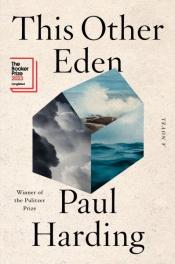
This Other Eden by Paul Harding
In 1792, formerly enslaved Benjamin Honey and his Irish wife, Patience, discovered an island where they could make a life together. More than a century later, the Honeys’ descendants remain there, with an eccentric, diverse band of neighbors: a pair of sisters raising three Penobscot orphans; Theophilus and Candace Larks and their nocturnal brood; the prophetic Zachary Hand To God Proverbs, a Civil War veteran who carves Biblical images in a hollow tree. Then comes the intrusion of “civilization”: eugenics-minded state officials determine to cleanse” the island, and a missionary schoolteacher selects one light-skinned boy to save. The rest will succumb to the authorities’ institutions or cast themselves on the waters in a new Noah’s Ark.
Full of lyricism and power, This Other Eden explores the hopes and dreams and resilience of those seen not to fit a world brutally intolerant of difference.
Image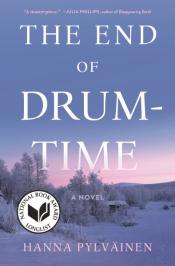
The End of Drum-Time by Hanna Pylväinen
It’s 1851 at the edge of the arctic circle, and things are changing quickly. The church outpost that Lars Levi, a fervent Lutheran minister, mans is a rugged, sparsely populated one. But as the zeal of his teachings mounts, so does the attendance at the weekly services he holds. The Sámi reindeer herders he’s been sent to minister to are skeptical of the Christian values—and strict rules—he preaches, but when Biettar, one of the Sami’s most respected herders, has a dramatic religious awakening on the shortest day of the year, more and more of the Sámi people become ready to let their long-held traditions and beliefs give way to new ones. Biettar’s new commitment to Lars and his teachings means that Biettar’s son, Ivvár, is left to tend the family’s reindeer herd alone, an increasingly impossible task.
Meanwhile, Lars’s daughter, Willa, has always been the picture of obedience, until a chance encounter with Ivvár leads to an infatuation that gradually becomes something more. When a catastrophic illness threatens the life of her young brother, everything she’s ever believed is called into question, making her feel reckless—and free—in a way she’s never been before.
Gorgeously written and stunning in scope, The End of Drum-Time is both a powerful immersion into a rich and sometimes forgotten culture and a celebration of a beautiful, ancient way of life. It masterfully weaves together the complex geopolitics and rich tradition of nineteenth-century Scandinavia; brings to life a people caught between an old way of life and the new; and asks how what we believe shapes the course of our lives.
- Longlist
- Image
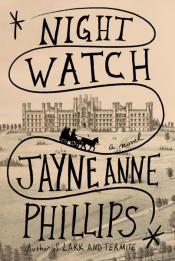
Night Watch by Jayne Anne Phillips
From one of our most accomplished novelists, a mesmerizing story about a mother and daughter seeking refuge in the chaotic aftermath of the Civil War.
In 1874, in the wake of the War, erasure, trauma, and namelessness haunt civilians and veterans, renegades and wanderers, freedmen and runaways. Twelve-year-old ConaLee, the adult in her family for as long as she can remember, finds herself on a buckboard journey with her mother, Eliza, who hasn’t spoken in more than a year. They arrive at the Trans-Allegheny Lunatic Asylum in West Virginia, delivered to the hospital’s entrance by a war veteran who has forced himself into their world. There, far from family, a beloved neighbor, and the mountain home they knew, they try to reclaim their lives.
The omnipresent vagaries of war and race rise to the surface as we learn their their flight to the highest mountain ridges of western Virginia; the disappearance of ConaLee’s father, who left for the War and never returned. Meanwhile, in the asylum, they begin to find a new path. ConaLee pretends to be her mother’s maid; Eliza responds slowly to treatment. They get swept up in the life of the facility—the mysterious man they call the Night Watch; the orphan child called Weed; the fearsome woman who runs the kitchen; the remarkable doctor at the head of the institution.
Epic, enthralling, and meticulously crafted, Night Watch is a brilliant portrait of family endurance against all odds, and a stunning chronicle of surviving war and its aftermath.
Image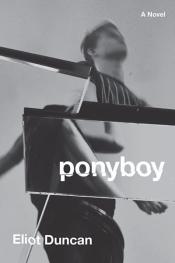
Ponyboy: A Novel by Eliot Duncan
An evocative debut novel of trans-masculinity, addiction, and the pain and joy of becoming.
In the first of three acts, Ponyboy’s titular narrator—a pill-popping, speed-snorting trans-masculine lightning bolt—unravels in his Paris apartment. Ponyboy is caught in a messy love triangle with Baby, a lesbian painter who can’t see herself being with someone trans, and Toni, a childhood friend who can actually see Ponyboy for who he is. Strung out, Ponyboy follows Baby to Berlin in act two, where he sinks deeper into drugs and falls for Hart, a fellow writer, all the while pursued by a megalomaniacal photographer hungry for the next hot thing. As Ponyboy’s relationships crumble, he overdoses and find himself alone in his childhood home in Nebraska. The novel’s final act follows Ponyboy to rehab, exploring the ways in which trans identity, addiction, and recovery reforge the bond between mother and child. Eliot Duncan reveals, in precise atmospheric prose reminiscent of Anne Carson and Allen Ginsberg, the innate splendor, joy, and ache of becoming oneself.
Image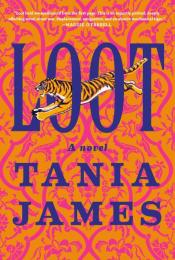
Loot by Tania James
A spellbinding historical novel set in the eighteenth a hero’s quest, a love story, the story of a young artist coming of age, and an exuberant heist adventure that traces the bloody legacy of colonialism across two continents and fifty years. A wildly inventive, irresistible feat of storytelling from a writer at the height of her powers.
Abbas is just seventeen years old when his gifts as a woodcarver come to the attention of Tipu Sultan, and he is drawn into service at the palace in order to build a giant tiger automaton for Tipu’s sons, a gift to commemorate their return from British captivity. His fate—and the fate of the wooden tiger he helps create—will mirror the vicissitudes of nations and dynasties ravaged by war across India and Europe.
Working alongside the legendary French clockmaker Lucien du Leze, Abbas hones his craft, learns French, and meets Jehanne, the daughter of a French expatriate. When Du Leze is finally permitted to return home to Rouen, he invites Abbas to come along as his apprentice. But by the time Abbas travels to Europe, Tipu’s palace has been looted by British forces, and the tiger automaton has disappeared. To prove himself, Abbas must retrieve the tiger from an estate in the English countryside, where it is displayed in a collection of plundered art.
Image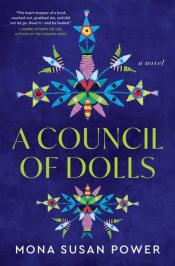
A Council of Dolls: A Novel by Mona Susan Power
From the mid-century metropolis of Chicago to the windswept ancestral lands of the Dakota people, to the bleak and brutal Indian boarding schools, A Council of Dolls is the story of three women, told in part through the stories of the dolls they carried...
Sissy, born 1961: Sissy’s relationship with her beautiful and volatile mother is difficult, even dangerous, but her life is also filled with beautiful things, including a new Christmas present, a doll called Ethel. Ethel whispers advice and kindness in Sissy’s ear, and in one especially terrifying moment, maybe even saves Sissy’s life.
Lillian, born 1925: Born in her ancestral lands in a time of terrible change, Lillian clings to her sister, Blanche, and her doll, Mae. When the sisters are forced to attend an “Indian school” far from their home, Blanche refuses to be cowed by the school’s abusive nuns. But when tragedy strikes the sisters, the doll Mae finds her way to defend the girls.
Cora, born 1888: Though she was born into the brutal legacy of the “Indian Wars,” Cora isn’t afraid of the white men who remove her to a school across the country to be “civilized.” When teachers burn her beloved buckskin and beaded doll Winona, Cora discovers that the spirit of Winona may not be entirely lost...
A modern masterpiece, A Council of Dolls is gorgeous, quietly devastating, and ultimately hopeful, shining a light on the echoing damage wrought by Indian boarding schools, and the historical massacres of Indigenous people. With stunning prose, Mona Susan Power weaves a spell of love and healing that comes alive on the page.
Image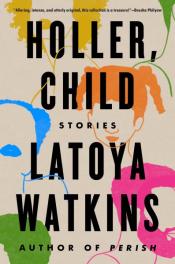
Holler, Child: Stories by LaToya Watkins
In Holler, Child's eleven brilliant stories, LaToya Watkins presses at the bruises of guilt, love, and circumstance. Each story introduces us to a character irrevocably shaped by place and reaching toward something—hope, reconciliation, freedom.
In "Cutting Horse," the appearance of a horse in a man's suburban backyard places a former horse breeder in trouble with the police. In "Holler, Child," a mother is forced into an impossible position when her son gets in a kind of trouble she knows too well from the other side. And "Time After" shows us the unshakable bonds of family as a sister journeys to find her estranged brother—the one who saved her many times over.
Throughout Holler, Child, we see love lost and gained, and grief turned to hope. Much like LaToya Watkins's acclaimed debut novel, Perish, this collection peers deeply into lives of women and men experiencing intimate and magnificent reckonings—exploring how race, power, and inequality map on the individual, and demonstrating the mythic proportions of everyday life.
Non-Fiction
Winner
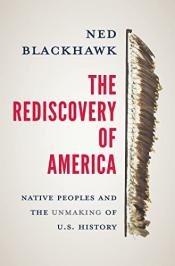
The Rediscovery of America: Native Peoples and the Unmaking of U.S. History by Ned Blackhawk
A sweeping and overdue retelling of U.S. history that recognizes that Native Americans are essential to understanding the evolution of modern America
The most enduring feature of U.S. history is the presence of Native Americans, yet most histories focus on Europeans and their descendants. This long practice of ignoring Indigenous history is changing, however, with a new generation of scholars insists that any full American history address the struggle, survival, and resurgence of American Indian nations. Indigenous history is essential to understanding the evolution of modern America.
Ned Blackhawk interweaves five centuries of Native and non‑Native histories, from Spanish colonial exploration to the rise of Native American self-determination in the late twentieth century. In this transformative synthesis he shows that:
- European colonization in the 1600s was never a predetermined success;
- Native nations helped shape England’s crisis of empire;
- The first shots of the American Revolution were prompted by Indian affairs in the interior;
- California Indians targeted by federally funded militias were among the first casualties of the Civil War;
- The Union victory forever recalibrated Native communities across the West;
- Twentieth-century reservation activists refashioned American law and policy.
Blackhawk’s retelling of U.S. history acknowledges the enduring power, agency, and survival of Indigenous peoples, yielding a truer account of the United States and revealing anew the varied meanings of America.
- Finalists
- Image
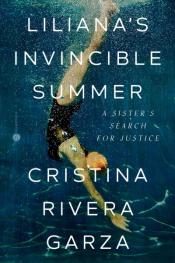
Liliana's Invincible Summer: A Sister's Search for Justice by Cristina Rivera Garza
I seek justice, I finally said. I seek justice for my sister... Sometimes it takes twenty-nine years to say it out loud, to say it out loud on a phone call with a lawyer at the General Attorney’s office: I seek justice.
September 2019. Cristina Rivera Garza travels from her home in Texas to Mexico City, in search of an old, unresolved criminal file. “My name is Cristina Rivera Garza,” she wrote in her request to the attorney general, “and I am writing to you as a relative of Liliana Rivera Garza, who was murdered on July 16, 1990.” It’s been twenty-nine years. Twenty-nine years, three months, and two days since Liliana was murdered by an abusive ex-boyfriend—and Cristina knows there is only a slim chance of recovering the file. And yet, inspired by feminist movements across the world and enraged by the global epidemic of femicide and intimate partner violence, she embarks on a path toward justice. Liliana’s Invincible Summer is the account—and the outcome—of that extraordinary quest.
In luminous, poetic prose, Rivera Garza tells a singular yet universally resonant story: that of a spirited, wondrously hopeful young woman who tried to survive in a world of increasingly normalized gendered violence. Following her decision to recover her sister’s file, Rivera Garza traces the history of Liliana’s life, from her early romance with a handsome but possessive and short-tempered man, to that exhilarating final summer of 1990 when Liliana loved, thought, and traveled more widely and freely than she ever had before.
Using her remarkable talents as an acclaimed scholar, novelist, and poet, Rivera Garza collected and curated evidence—handwritten letters, police reports, school notebooks, interviews with Liliana’s loved ones—to render and understand a life beyond the crime itself. Through this remarkable and genre-defying memoir, Rivera Garza confronts the trauma of losing her sister and examines from multiple angles how this tragedy continues to shape who she is—and what she fights for—today.
Image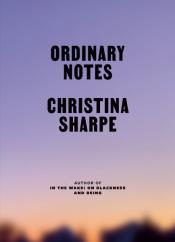
Ordinary Notes by Christina Sharpe
A singular achievement, Ordinary Notes explores profound questions about loss and the shapes of Black life that emerge in the wake. In a series of 248 notes that gather meaning as we read them, Christina Sharpe skillfully weaves artifacts from the past--public ones alongside others that are poignantly personal—with present realities and possible futures, intricately constructing an immersive portrait of everyday Black existence. The themes and tones that echo through these pages, sometimes about language, beauty, memory; sometimes about history, art, photography, and literature—always attend, with exquisite care, to the ordinary-extraordinary dimensions of Black life.
At the heart of Ordinary Notes is the indelible presence of the author's mother, Ida Wright Sharpe. "I learned to see in my mother's house," writes Sharpe. "I learned how not to see in my mother's house... My mother gifted me a love of beauty, a love of words." Using these gifts and other ways of seeing, Sharpe steadily summons a chorus of voices and experiences to the page. She practices an aesthetic of "beauty as a method," collects entries from a community of thinkers toward a "Dictionary of Untranslatable Blackness," and rigorously examines sites of memory and memorial. And in the process, she forges a brilliant new literary form, as multivalent as the ways of Black being it traces.
Image
We Could Have Been Friends, My Father and I: A Palestinian Memoir by Raja Shehadeh
Aziz Shehadeh was many lawyer, activist, and political detainee, he was also the father of bestselling author and activist Raja. In this new and searingly personal memoir, Raja Shehadeh unpicks the snags and complexities of their relationship.
A vocal and fearless opponent, Aziz resists under the British mandatory period, then under Jordan, and, finally, under Israel. As a young man, Raja fails to recognise his father's courage and, in turn, his father does not appreciate Raja's own efforts in campaigning for Palestinian human rights. When Aziz is murdered in 1985, it changes Raja irrevocably.
This is not only the story of the battle against the various oppressors of the Palestinians, but a moving portrait of a particular father and son relationship.Image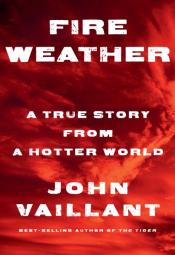
Fire Weather: A True Story from a Hotter World by John Vaillant
In May 2016, Fort McMurray, the hub of Canada’s oil industry and America’s biggest foreign supplier, was overrun by wildfire. The multi-billion-dollar disaster melted vehicles, turned entire neighborhoods into firebombs, and drove 88,000 people from their homes in a single afternoon. Through the lens of this apocalyptic conflagration—the wildfire equivalent of Hurricane Katrina—John Vaillant warns that this was not a unique event, but a shocking preview of what we must prepare for in a hotter, more flammable world.
Fire has been a partner in our evolution for hundreds of millennia, shaping culture, civilization, and, very likely, our brains. Fire has enabled us to cook our food, defend and heat our homes, and power the machines that drive our titanic economy. Yet this volatile energy source has always threatened to elude our control, and in our new age of intensifying climate change, we are seeing its destructive power unleashed in previously unimaginable ways.
With masterly prose and a cinematic eye, Vaillant takes us on a riveting journey through the intertwined histories of North America’s oil industry and the birth of climate science, to the unprecedented devastation wrought by modern forest fires, and into lives forever changed by these disasters. John Vaillant’s urgent work is a book for—and from—our new century of fire, which has only just begun.
- Longlist
- Image
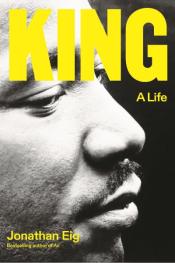
The first full biography in decades, King mixes revelatory and exhaustive new research with brisk and accessible storytelling to forge the definitive life for our times.
Vividly written and exhaustively researched, Jonathan Eig’s A Life is the first major biography in decades of the civil rights icon Martin Luther King Jr.―and the first to include recently declassified FBI files. In this revelatory new portrait of the preacher and activist who shook the world, the bestselling biographer gives us an intimate view of the courageous and often emotionally troubled human being who demanded peaceful protest for his movement but was rarely at peace with himself. He casts fresh light on the King family’s origins as well as MLK’s complex relationships with his wife, father, and fellow activists. King reveals a minister wrestling with his own human frailties and dark moods, a citizen hunted by his own government, and a man determined to fight for justice even if it proved to be a fight to the death. As he follows MLK from the classroom to the pulpit to the streets of Birmingham, Selma, and Memphis, Eig dramatically re-creates the journey of a man who recast American race relations and became our only modern-day founding father―as well as the nation’s most mourned martyr.
In this landmark biography, Eig gives us an MLK for our a deep thinker, a brilliant strategist, and a committed radical who led one of history’s greatest movements, and whose demands for racial and economic justice remain as urgent today as they were in his lifetime.
Image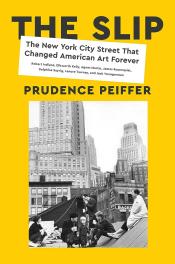
The Slip: The New York City Street That Changed American Art Forever by Prudence Peiffer
The never-before-told story of an obscure little street at the lower tip of Manhattan and the remarkable artists who got their start there.
For just over a decade, from 1956 to 1967, a collection of dilapidated former sail-making warehouses clustered at the lower tip of Manhattan became the quiet epicenter of the art world. Coenties Slip, a dead-end street near the water, was home to a circle of wildly talented and varied artists that included Robert Indiana, Ellsworth Kelly, Agnes Martin, James Rosenquist, Delphine Seyrig, Lenore Tawney, and Jack Youngerman. As friends and inspirations to one another, they created a unique community for unbridled creative expression and experimentation, and the works they made at the Slip would go on to change the course of American art.
Now, for the first time, Prudence Peiffer pays homage to these artists and the unsung impact their work had on the direction of late twentieth-century art and film. This remarkable biography, as transformative as the artists it illuminates, questions the very concept of a “group” or “movement,” as it spotlights the Slip’s eclectic mix of gender and sexual orientation, abstraction and Pop, experimental film, painting, and sculpture, assemblage and textile works. Brought together not by the tenets of composition or technique, nor by philosophy or politics, the artists cultivated a scene at the Slip defined by a singular spirit of community and place. They drew lasting inspiration from one another, but perhaps even more from where they called home, and the need to preserve the solitude its geography fostered. Despite Coenties Slip’s obscurity, the entire history of Manhattan was inscribed into its cobblestones—one of the first streets and central markets of the new colony, built by enslaved people, with revolutionary meetings at the tavern just down Pearl Street; named by Herman Melville in Moby Dick and site of the boom and bust of the city’s maritime industry; and, in the artists’s own time, a development battleground for Jane Jacobs and Robert Moses. The Slip’s history is entwined with that of the artists and their art—eclectic and varied work that was made from the wreckage of the city’s many former lives.
An ambitious and singular account of a time, a place, and a group of extraordinary people, The Slip investigates the importance of community, and makes an argument for how we are shaped by it, and how it in turns shapes our work.
Image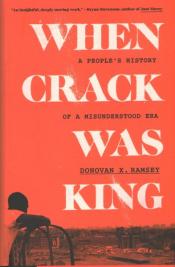
When Crack Was King: A People's History of a Misunderstood Era by Donovan X. Ramsey
A kaleidoscopic account of the crack cocaine era and a community’s ultimate resilience, told through a cast of characters whose lives illuminate the dramatic rise and fall of the epidemic.
The crack epidemic of the 1980s and 1990s is arguably the least examined crisis in American history. Beginning with the myths inspired by Reagan’s war on drugs, journalist Donovan X. Ramsey’s exacting analysis traces the path from the last triumphs of the Civil Rights Movement to the devastating realities we live with a racist criminal justice system, continued mass incarceration and gentrification, and increased police brutality.
When Crack Was King follows four individuals to give us a startling portrait of crack’s destruction and devastating Elgin Swift, an archetype of American industry and ambition and the son of a crack-addicted father who turned their home into a “crack house”; Lennie Woodley, a former crack addict and sex worker; Kurt Schmoke, the longtime mayor of Baltimore and an early advocate of decriminalization; and Shawn McCray, community activist, basketball prodigy, and a founding member of the Zoo Crew, Newark’s most legendary group of drug traffickers.
Weaving together riveting research with the voices of survivors, When Crack Was King is a crucial reevaluation of the era and a powerful argument for providing historically violated communities with the resources they deserve.
Image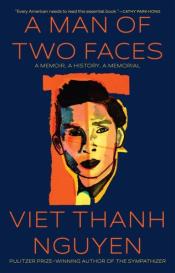
A Man of Two Faces: A Memoir, A History, A Memorial by Viet Thanh Nguyen
With insight, humor, formal invention, and lyricism, in A Man of Two Faces Viet Thanh Nguyen rewinds the film of his own life. He expands the genre of personal memoir by acknowledging larger stories of refugeehood, colonization, and ideas about Vietnam and America, writing with his trademark sardonic wit and incisive analysis, as well as a deep emotional openness about his life as a father and a son.
At the age of four, Nguyen and his family are forced to flee his hometown of Ban Mê Thuột and come to the USA as refugees. After being removed from his brother and parents and homed with a family on his own, Nguyen is later allowed to resettle into his own family in suburban San José. But there is violence hidden behind the sunny façade of what he calls AMERICA™. One Christmas Eve, when Nguyen is nine, while watching cartoons at home, he learns that his parents have been shot while working at their grocery store, the SàiGòn Mới, a place where he sometimes helps price tins of fruit with a sticker gun. Years later, as a teenager, the blood-stirring drama of the films of the Vietnam War such as Apocalypse Now throw Nguyen into an existential crisis: how can he be both American and Vietnamese, both the killer and the person being killed? When he learns about an adopted sister who has stayed back in Vietnam, and ultimately visits her, he grows to understand just how much his parents have left behind. And as his parents age, he worries increasingly about their comfort and care, and realizes that some of their older wounds are reopening,
Profound in its emotions and brilliant in its thinking about cultural power, A Man of Two Faces explores the necessity of both forgetting and of memory, the promises America so readily makes and breaks, and the exceptional life story of one of the most original and important writers working today.
Image
I Saw Death Coming: A History of Terror and Survival in the War Against Reconstruction by Kidada E. Williams
The story of Reconstruction is often told from the perspective of the politicians, generals, and journalists whose accounts claim an outsized place in collective memory. But this pivotal era looked very different to African Americans in the South transitioning from bondage to freedom after 1865. They were besieged by a campaign of white supremacist violence that persisted through the 1880s and beyond. For too long, their lived experiences have been sidelined, impoverishing our understanding of the obstacles post–Civil War Black families faced, their inspiring determination to survive, and the physical and emotional scars they bore because of it.
In I Saw Death Coming, Kidada E. Williams offers a breakthrough account of the much-debated Reconstruction period, transporting readers into the daily existence of formerly enslaved people building hope-filled new lives. Drawing on overlooked sources and bold new readings of the archives, Williams offers a revelatory and, in some cases, minute-by-minute record of nighttime raids and Ku Klux Klan strikes. And she deploys cutting-edge scholarship on trauma to consider how the effects of these attacks would linger for decades—indeed, generations—to come.
For readers of Carol Anderson, Tiya Miles, and Clint Smith, I Saw Death Coming is an indelible and essential book that speaks to some of the most pressing questions of our times.
Poetry
Winner
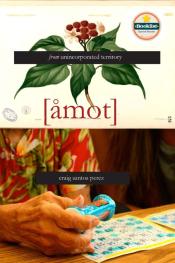
from unincorporated territory [åmot] by Craig Santos Perez
Experimental and visual poems diving into the history and culture of the poet’s homeland, Guam.
This book is the fifth collection in Craig Santos Perez’s ongoing from unincorporated territory series about the history of his homeland, the western Pacific island of Guåhan (Guam), and the culture of his indigenous Chamoru people. “Åmot” is the Chamoru word for “medicine,” commonly referring to medicinal plants. Traditional Chamoru healers were known as yo’åmte; they gathered åmot in the jungle and recited chants and invocations of taotao’mona, or ancestral spirits, in the healing process.
Through experimental and visual poetry, Perez explores how storytelling can become a symbolic form of åmot, offering healing from the traumas of colonialism, militarism, migration, environmental injustice, and the death of elders.
- Finalists
- Image
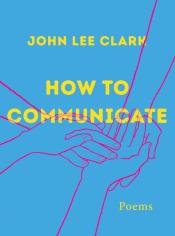
How to Communicate: Poems by John Lee Clark
Formally restless and relentlessly instructive, How to Communicate is a dynamic journey through language, community, and the unfolding of an identity.
Poet John Lee Clark pivots from inventive forms inspired by the Braille slate to sensuous prose poems to incisive erasures that find new narratives in nineteenth-century poetry. Calling out the limitations of the literary canon, Clark includes pathbreaking translations from American Sign Language and Protactile, a language built on touch. How to Communicate embraces new linguistic possibilities that emanate from Clark’s unique perspective and his connection to an expanding, inclusive activist community. Amid the astonishing task of constructing a new canon, the poet reveals a radically commonplace life. He explores grief and the vagaries of family, celebrates the small delights of knitting and visiting a museum, and, once, encounters a ghost in a gas station. Counteracting the assumptions of the sighted and hearing world with humor and grace, Clark finds beauty in the revelations of communicating through “All things living and dead cry out to me / when I touch them.”
A rare work of transformation and necessary discovery, How to Communicate is a brilliant debut that insists on the power of poetry.
Image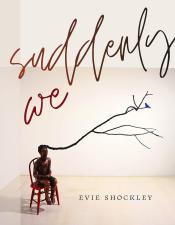
suddenly we by Evie Shockley
Evie Shockley's new poems invite us to dream—and work—toward a more capacious "we."
In her new poetry collection, Evie Shockley mobilizes visual art, sound, and multilayered language to chart routes towards openings for the collective dreaming of a more capacious "we." How do we navigate between the urgency of our own becoming and the imperative insight that whoever we are, we are in relation to each other? Beginning with the visionary art of Black women like Alison Saar and Alma Thomas, Shockley's poems draw and forge a widening constellation of connections that help make visible the interdependence of everyone and everything on Earth.
perched
i am black, comely,
a girl on the cusp of desire.
my dangling toes take the rest
the rest of my body refuses. spine upright,
my pose proposes anticipation. i poise
in copper-colored tension, intent on
manifesting my soul in the discouraging world.
under the rough eyes of others, i stiffen.
if i must be hard, it will be as a tree, alive
with change. inside me, a love of beauty rises
like sap, sprouts from my scalp
and stretches forth. i send out my song, an aria
blue and feathered, and grow toward it,
choirs bare, but soon to bud. i am
black and becoming.
—after Alison Saar's Blue Bird
Image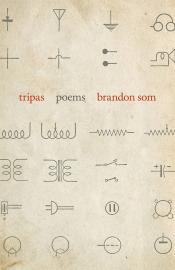
Tripas: Poems by Brandon Som
With Tripas, Brandon Som follows up his award-winning debut with a book of poems built out of a multicultural, multigenerational childhood home, in which he celebrates his Chicana grandmother, who worked nights on the assembly line at Motorola, and his Chinese American father and grandparents, who ran the family corner store.
Enacting a cómo se dice poetics, a dialogic poem-making that inventively listens to heritage languages and transcribes family memory, Som participates in a practice of mem(oir), placing each poem’s ear toward a confluence of history, labor, and languages, while also enacting a kind of “telephone” between cultures. Invested in the circuitry and circuitous routes of migration and labor, Som’s lyricism weaves together the narratives of his transnational communities, bringing to light what is overshadowed in the reckless transit of global capitalism and imagining a world otherwise—one attuned to the echo in the hecho, the oracle in the órale.
Image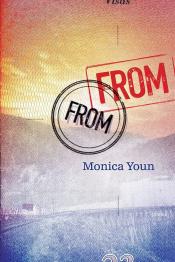
From From: Poems by Monica Youn
“Where are you from...? No―where are you from from?” It’s a question every Asian American gets asked as part of an incessant chorus saying you’ll never belong here, you’re a perpetual foreigner, you’ll always be seen as an alien, an object, or a threat.
Monica Youn’s From From brilliantly evokes the conflicted consciousness of deracination. If you have no core of “authenticity,” no experience of your so-called homeland, how do you piece together an Asian American identity out of Westerners’ ideas about Asians? Your sense of yourself is part stereotype, part aspiration, part guilt. In this dazzling collection, one sequence deconstructs the sounds and letters of the word “deracinations” to create a sonic landscape of micro- and macroaggressions, assimilation, and self-doubt. A kaleidoscopic personal essay explores the racial positioning of Asian Americans and the epidemic of anti-Asian hate. Several poems titled “Study of Two Figures” anatomize and dissect the Asian Midas the striving, nouveau-riche father; Dr. Seuss and the imaginary daughter Chrysanthemum-Pearl he invented while authoring his anti-Japanese propaganda campaign; Pasiphaë, mother of the minotaur, and Sado, the eighteenth-century Korean prince, both condemned to containers allegorical and actual.
From From is an extraordinary collection by a poet whose daring and inventive works are among the most vital in contemporary literature.
- Longlist
- Image
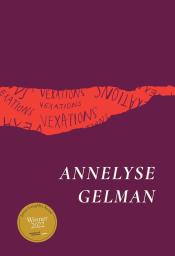
Vexations by Annelyse Gelman
A mother and daughter journey together through a strange speculative world in this experimental book-length poem.
Annelyse Gelman’s book-length poem Vexations is a surreal, glitchy meditation on empathy, ecology, and precarity. Throughout the book winds a narrative about a mother and daughter as they move through a world of social and economic collapse in search of a post-capitalist safe haven. All the while, they also navigate a condition that affects the daughter’s empathic abilities, making her vulnerable to emotional contagion.
Vexations is titled and structured after Erik Satie’s composition of the same name, a piece that requires patience, endurance, and concentration from both its audience and its players. Similarly, Gelman’s Vexations employs repetition and variation to engage the reader’s attention. Hers is an ambient poetry, drawing on the aesthetic qualities of drone music and sampling voices and sounds to create a lush literary backdrop filled with pulsing psychedelic detail.
Image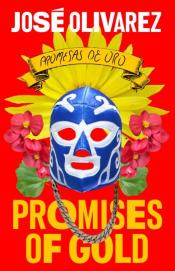
Promises of Gold by José Olivarez
Love is at the heart of everything we do, and yet it is often mishandled, misrepresented, or narrowly defined. In the words of José Olivarez: “How many bad lovers have gotten poems? How many crushes? No disrespect to romantic love—but what about our friends? Those homies who show up when the romance ends to help you heal your heart. Those homies who are there all along—cheering for us and reminding us that love is abundant.”
Written in English and combined with a Spanish translation by poet David Ruano, “Promises of Gold explores many forms of love and how “a promise made isn’t always a promise kept,” as Olivarez grapples with the contradictions of the American Dream laying bare the ways in which “love is complicated by forces larger than our hearts.”
He writes, “For those of us who are hyphenated Americans, where do we belong? Promises of Gold attempts to reckon with colonial legacy and the reality of what those promises have borne out for Mexican descendants. I wrote this book to imagine and document an ongoing practice of healing—healing that requires me to show up for myself, my community, my friends, my family, and my loves every day.”
Whether readers enter this collection in English or Spanish, these extraordinary poems are sure to become beloved for their illuminations of life—and love.
Image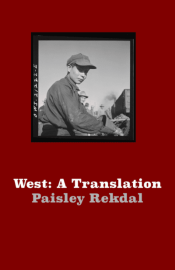
West: A Translation by Paisley Rekdal
Punctuated by historical images and told through multiple voices, languages, literary forms and documents, A Translation explores what unites and divides America, drawing a powerful, necessary connection between the completion of the transcontinental railroad and the Chinese Exclusion Act (1882-1943).
In 2018, Utah Poet Laureate Paisley Rekdal was commissioned to write a poem commemorating the 150th anniversary of the transcontinental railroad. The result is A Translation—an unflinching hybrid collection of poems and essays that draws a powerful, necessary connection between the railroad’s completion and the Chinese Exclusion Act (1882-1943). Carved into the walls of the Angel Island Immigration Station, where Chinese migrants to the United States were detained during the Chinese Exclusion Act, is a poem elegizing a detainee who committed suicide. As West translates this anonymous Chinese elegy character by character, what’s left is a haunting narrative distilled through the history and lens of transcontinental railroad workers, and a sweeping exploration of the railroad’s cultural impact on America. Punctuated by historical images and told through multiple voices, languages, literary forms and documents, West explores what unites and divides America, and how our ideas about American history creep forward, even as the nation itself constantly threatens to spiral back.
West is accompanied by a website (www.westtrain.org) which features video poems and encourages self-exploration of the transcontinental railroad’s history through an interactive, non-linear structure. Pairing this urgent book and innovative website, Rekdal masterfully challenges how histories themselves get written and disseminated. The result is a tour de force of resistance and resilience.
Image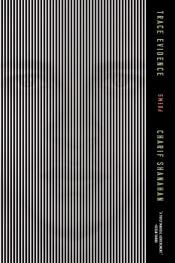
Trace Evidence: Poems by Charif Shanahan
In Trace Evidence, the urgent follow-up to his award-winning debut Into Each Room We Enter without Knowing, Charif Shanahan continues his piercing meditations on the intricacies of mixed-race identity, queer desire, time, mortality, and the legacies of anti-Blackness in the US and abroad.
At the collection’s center sits “On the Overnight from Agadir,” a poem that chronicles Shanahan’s survival of a devastating bus accident in Morocco, his mother’s birth country, and ruminates on home, belonging, and the mysteries of fate. With rich lyricism, power, and tenderness, Trace Evidence centers the racial periphery and excavates the vestiges of our violent colonial past in the most intimate aspects of our lives. In a language yoked equally to the physical and metaphysical worlds, the poet articulates the need we all share for real intimacy and connection, and proves, time and again, that the true cost of our separateness is the love that our survival requires.
Image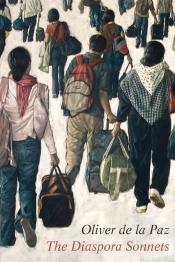
The Diaspora Sonnets by Oliver da la Paz
For fans of Diane Seuss and Victoria Chang, a coruscating collection that eloquently invokes the perseverance and myth of the Filipino diaspora in America.
In 1972, after Ferdinand Marcos declared martial law, Oliver de la Paz’s father, in a last fit of desperation to leave the Philippines, threw his papers at an immigration clerk, hoping to get them stamped. He was prepared to leave, having already quit his job and having exchanged pesos for dollars; but he couldn’t anticipate the challenges of the migratory lifestyle he and his family would soon adopt in America. Their search for a sense of “home” and boundless feelings of deracination are evocatively explored by award-winning poet de la Paz in this formally inventive collection of sonnets.Broken into three parts—“The Implacable West,” “Landscape with Work, Rest, and Silence,” and “Dwelling Music”—The Diaspora Sonnets eloquently invokes the perseverance and bold possibilities of de la Paz’s displaced family as they strove for stability and belonging. In order to establish her medical practice, de la Paz’s mother had to relocate often for residencies. As they moved from state to state his father worked to support the family. Sonnets thus flit from coast to coast, across prairies and deserts, along the way musing on shadowy dreams of a faraway country.
The sonnet proves formally malleable as de la Paz breaks and rejoins its tradition throughout this collection, embarking on a broader conversation about what fits and how one adapts—from the restrained use of rhyme in “Diaspora Sonnet in the Summer with the River Water Low” and carefully metered “Diaspora Sonnet Imagining My Father’s Uncertainty and Nothing Else” to the hybridized “Diaspora Sonnet at the Feeders Before the Freeze.” A series of “Chain Migration” poems viscerally punctuate the sonnets, giving witness to the labor and sacrifice of the immigrant experience, as do a series of hauntingly beautiful pantoums.
Written with the deft touch of a virtuoso and the compassion of a loving son, The Diaspora Sonnets powerfully captures the peculiar pangs of a diaspora “that has left and is forever leaving.”
Translated Literature
Winner
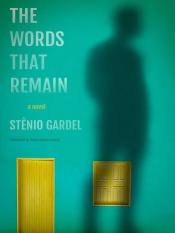
The Words That Remain by Stênio Gardel, Bruna Dantas Lobato
A letter has beckoned to Raimundo since he received it decades ago from his youthful passion, handsome Cicero.
But having grown up in an impoverished area of Brazil where the demands of manual labor thwarted his becoming literate, Raimundo has long been unable to read. As young men, he and Cicero fell in love, only to have Raimundo's father brutally beat his son when he discovered their affair. Even after Raimundo succeeds in making a life for himself in the big city, he continues to be haunted by this secret missive full of longing from the distant past. Now, as an elderly man, he at last acquires a true education and the ability to access the letter. Exploring Brazil's little-known hinterland as well its urban haunts, this is a sweeping novel of repression, violence, and shame, along with their flip side: survival, endurance, and the ultimate triumph of an unforgettable figure on society's margins. The Words That Remain explores the universal power of the written word and language, and how they affect all our relationships.
- Finalists
- Image
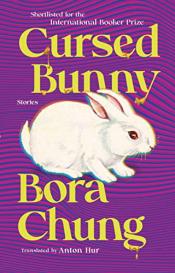
Cursed Bunny by Bora Chung, Anton Hur
Cursed Bunny is a genre-defying collection of short stories by Korean author Bora Chung. Blurring the lines between magical realism, horror, and science-fiction, Chung uses elements of the fantastic and surreal to address the very real horrors and cruelties of patriarchy and capitalism in modern society.
Anton Hur’s translation skilfully captures the way Chung’s prose effortlessly glides from being terrifying to wryly humorous.
Image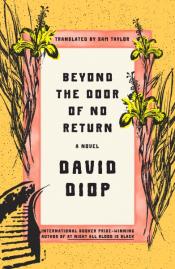
Beyond the Door of No Return by David Diop, Sam Taylor
Paris, 1806. The renowned botanist Michel Adanson lies on his deathbed, the masterwork to which he dedicated his life still incomplete. As he expires, the last word to escape his lips is a woman’s Maram.
The key to this mysterious woman’s identity is Adanson’s unpublished memoir of the years he spent in Senegal, concealed in a secret compartment in a chest of drawers. Therein lies a story as fantastical as it is Maram, it turns out, is none other than the fabled revenant. A young woman of noble birth from the kingdom of Waalo, Maram was sold into slavery but managed to escape from the Island of Gorée—a major embarkation point of the transatlantic slave trade—to a small village hidden in the forest. While on a research expedition in West Africa as a young man, Adanson hears the story of the revenant and becomes obsessed with finding her. Accompanied by his guide, he ventures deep into the Senegalese bush on a journey that reveals not only the savagery of the French colonial occupation but also the unlikely transports of the human heart.
Written with sensitivity and narrative flair, David Diop’s Beyond the Door of No Return is a love story like few others. Drawing on the richness and lyricism of Senegal’s oral traditions, Diop has constructed a historical epic of the highest order.
Image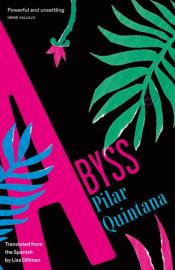
Abyss by Pilar Quintana, Lisa Dillman
Claudia is an impressionable eight-year-old girl, trying to understand the world through the eyes of the adults around her. But her hardworking father hardly speaks a word, while her unhappy mother spends her days reading celebrity lifestyle magazines, tending to her enormous collection of plants, and filling Claudia’s head with stories about women who end their lives in tragic ways. Then an interloper arrives, disturbing the delicate balance of family life, and Claudia’s world starts falling apart. In this strikingly vivid portrait of Cali, Colombia, Claudia’s acute observations remind us that children are capable of discerning extremely complex realities even if they cannot fully understand them. In Abyss, Quintana leads us brilliantly into the lonely heart of the child we have all once been, driven by fear of abandonment.
Image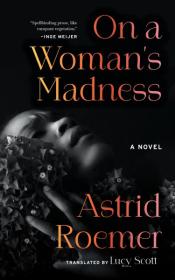
On a Woman's Madness by Astrid Roemer, Lucy Scott
A classic of queer literature that’s as electrifying today as it was when it originally appeared in 1982, On a Woman’s Madness tells the story of Noenka, a courageous Black woman trying to live a life of her choosing.
When her abusive husband of just nine days refuses her request for divorce, Noenka flees her hometown in Suriname, on South America's tropical northeastern coast, for the capital city of Paramaribo. Unsettled and unsupported, her life in this new place is illuminated by the passionate romances of the present but haunted by society’s expectations and her ancestral past.
Translated into sensuous English for the first time by Lucy Scott, Astrid Roemer’s intimate novel—with its tales of plantation-dwelling snakes, rare orchids, and star-crossed lovers—is a blistering meditation on the cruelties we inflict on those who disobey. Roemer, the first Surinamese winner of the prestigious Dutch Literature Prize, carves out postcolonial Suriname in barbed, resonant fragments. Who is Noenka? Roemer asks us. “I’m Noenka,” she responds resolutely, “which means Never Again.”
- Longlist
- Image
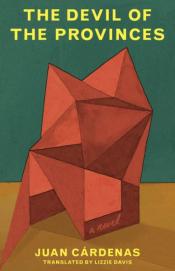
The Devil of the Provinces by Juan Cárdenas, Lizzie Davis
After a series of failures, a biologist returns to his hometown to live with his grieving mother. But in this gripping crime novel that upends the genre’s conventions, strange events unravel what he thought he knew of his past, his present, and himself.
When a biologist returns home to Colombia after fifteen years abroad, he quickly becomes entangled in the trappings of his past and his increasingly bizarre the unsolved murder of his brother, a drug dealer seeking transcendence, a boarding school where students disappear and girls give birth to strange creatures. An encounter with a well-connected acquaintance leads to a job offer in big agriculture, and he’s gradually drawn into a web of conspiracy. Ultimately, he may be destined to remain in the city he’d hoped never to see again. In The Devil of the Provinces, nothing is as it seems.
Image
Kairos by Jenny Erpenbeck, Michael Hofmann
Jenny Erpenbeck’s much anticipated new novel Kairos is a complicated love story set amidst swirling, cataclysmic events as the GDR collapses and an old world evaporates.
Jenny Erpenbeck (the author of Go, Went, Gone and Visitation) is an epic storyteller and arguably the most powerful voice in contemporary German literature. Erpenbeck’s new novel Kairos—an unforgettably compelling masterpiece—tells the story of the romance begun in East Berlin at the end of the 1980s when nineteen-year-old Katharina meets by chance a married writer in his fifties named Hans. Their passionate yet difficult long-running affair takes place against the background of the declining GDR, through the upheavals wrought by its dissolution in 1989 and then what comes after. In her unmistakable style and with enormous sweep, Erpenbeck describes the path of two lovers, as Katharina grows up and tries to come to terms with a not always ideal romance, even as a whole world with its own ideology disappears. As the Times Literary Supplement writes: “The weight of history, the particular experiences of East and West, and the ways in which cultural and subjective memory shape individual identity has always been present in Erpenbeck’s work. She knows that no one is all bad, no state all rotten, and she masterfully captures the existential bewilderment of this period between states and ideologies.”
In the opinion of her superbly gifted translator Michael Hofmann, Kairos is the great post-Unification novel. And, as The New Republic has commented on his work as a translator: “Hofmann’s translation is invaluable—it achieves what translations are supposedly unable to do: it is at once ‘loyal’ and ‘beautiful.’”
Image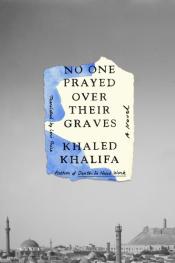
No One Prayed Over Their Graves by Khaled Khalifa, Leri Prince
On a December morning in 1907, two close friends, Hanna and Zakariya, return to their village near Aleppo after a night of drunken carousing in the city, only to discover that there has been a massive flood. Their neighbors, families, children―nearly all of them are dead. Their homes, shops, and places of worship are leveled. Their lives will never be the same.
Hanna was once a wealthy libertine, a landowner who built a famed citadel devoted to the pursuit of pleasure and excess. But with the loss of his home, wife, and community, he transforms, becoming an ascetic mystic obsessed with death and the meaning of life. In No One Prayed Over Their Graves , we follow Hanna's life before and after the flood, tracing friendships, loves and lusts, family and business, until he is just one thread in the rich tapestry of Aleppo.
Khaled Khalifa weaves a sweeping tale of life and death in the hubbub of Aleppine society at the turn of the twentieth century. No One Prayed Over Their Graves is a portrait of a people on the verge of great change―from provincial villages to the burgeoning modernity of the city, where Christians, Muslims, and Jews live and work together, united in their love for Aleppo and their dreams for the future.
Image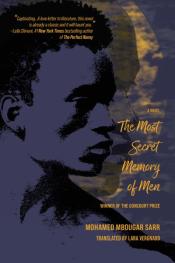
The Most Secret Memory of Men by Mohamed Mbougar Sarr, Lara Vergnaud
Paris, 2018. Diégane Latyr Faye, a young Senegalese writer, discovers a legendary book published in 1938 titled The Maze of Inhumanity . No one knows what happened to the author, T.C. Elimane, once referred to as the “Black Rimbaud.” After he was accused of plagiarism, his reputation was destroyed by the critics. He subsequently disappeared without a trace.
Curiosity turns to obsession, and Faye embarks on a quest to uncover the fate of the mysterious T.C. Elimane. His search weaves past and present, countries and continents, following the author’s labyrinthine trail from Senegal to Argentina and France and confronting the great tragedies of history.
Alongside his investigation, Faye becomes part of a group of young African writers in Paris. They talk, drink, make love, and philosophize about the role of exile in artistic creation. He becomes particularly close to two women: the seductive Siga, keeper of secrets, and the fleeting photojournalist Aïda.
But throughout, a question persists: will he get to the truth at the center of the maze?
A gripping detective novel without a detective and a masterpiece of perpetual reinvention, The Most Secret Memory of Men confronts the impact of colonialism and neo-colonialism, the holocaust in Europe, dictatorships in South America and the Caribbean, genocide in Africa, and collaboration and resistance everywhere. Above all, it is a love song to literature and its timeless power.
Image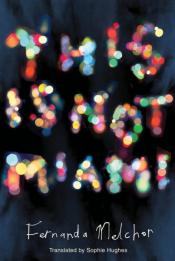
This is Not Miami by Fernanda Melchor, Sophie Hughes
Set in and around the Mexican city of Veracruz, This Is Not Miami delivers a series of devastating stories—spiraling from real events—that bleed together reportage and the author’s rich and rigorous imagination.
These narrative nonfiction pieces probe deeply into the motivations of murderers and misfits, into their desires and circumstances, forcing us to understand them—and even empathize—despite our wish to simply label them monsters. As in her hugely acclaimed novels Hurricane Season and Paradais, Fernanda Melchor’s masterful stories show how the violent and shocking aberrations that make the headlines are only the surface ruptures of a society on the brink of chaos.
Young People's Literature
Winner
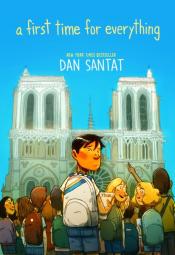
A First Time for Everything: A True Story by Dan Santat
Dan's always been a good kid. The kind of kid who listens to his teachers, helps his mom with grocery shopping, and stays out of trouble. But being a good kid doesn't stop him from being bullied and feeling like he's invisible, which is why Dan has low expectations when his parents send him on a class trip to Europe.
At first, he's right. He's stuck with the same girls from his middle school who love to make fun of him, and he doesn't know why his teacher insisted he come on this trip. But as he travels through France, Germany, Switzerland, and England, a series of first experiences begin to change him―first Fanta, first fondue, first time stealing a bike from German punk rockers... and first love.
Funny, heartwarming, and poignant, A First Time for Everything is a feel-good coming-of-age memoir based on New York Times bestselling author and Caldecott Medal winner Dan Santat's awkward middle school years. It celebrates a time that is universally challenging for many of us, but also life-changing as well.
- Finalists
- Image
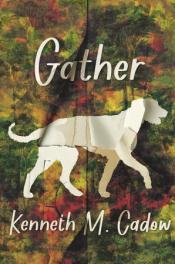
A resourceful teenager in rural Vermont struggles to hold on to the family home while his mom recovers from addiction in this striking debut novel.
Ian Gray isn’t supposed to have a dog, but a lot of things that shouldn’t happen end up happening anyway. And Gather, Ian’s adopted pup, is good company now that Ian has to quit the basketball team, find a job, and take care of his mom as she tries to overcome her opioid addiction. Despite the obstacles thrown their way, Ian is determined to keep his family afloat no matter what it takes. And for a little while, things are looking Ian makes friends, and his fondness for the outdoors and for fixing things lands him work helping neighbors. But an unforeseen tragedy results in Ian and his dog taking off on the run, trying to evade a future that would mean leaving their house and their land. Even if the community comes together to help him, would Ian and Gather have a home to return to?
Told in a wry, cautious first-person voice that meanders like a dog circling to be sure it’s safe to lie down, Kenneth M. Cadow’s resonant debut brings an emotional and ultimately hopeful story of one teen’s resilience in the face of unthinkable hardships.
Image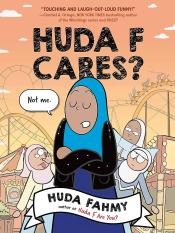
In this laugh-out-loud funny sequel to the graphic novel Huda F Are You?, the Fahmys are off to Disney World, but self-conscious Huda worries her family will stand out too much.
Huda and her sisters can’t believe it when her parents announce that they’re actually taking a vacation this summer... to DISNEY WORLD! But it’s not quite as perfect as it seems. First Huda has to survive a 24-hour road trip from Michigan to Florida, with her sisters annoying her all the way. And then she can’t help but notice the people staring at her and her family when they pray in public. Back home in Dearborn she and her family blend right in because there are so many other Muslim families, but not so much in Florida and along the way.
It’s a vacation of forced (but unexpectly successful?) sisterly bonding, a complicated new friendship, a bit more independence, and some mixed feelings about her family’s public prayers. Huda is proud of her religion and who she is, but she still sure wishes she didn’t care so much what other people thought.
Image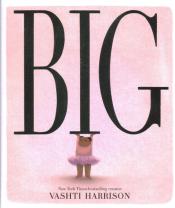
From a New York Times bestselling and award-winning creator, this deeply moving story shares valuable lessons about fitting in, standing out, and the beauty of joyful acceptance.
The first picture book written and illustrated by award-winning creator Vashti Harrison traces a child’s journey to self-love and shows the power of words to both hurt and heal. With spare text and exquisite illustrations, this emotional exploration of being big in a world that prizes small is a tender portrayal of how you can stand out and feel invisible at the same time.
Image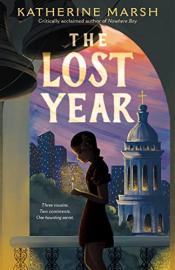
The Lost Year: A Survival Story of the Ukrainian Famine by Katherine Marsh
A middle-grade survival story that traces a family secret back to the Holodomor, a terrible famine that devastated Soviet Ukraine in the 1930s.
Thirteen-year-old Matthew is miserable. His journalist dad is stuck overseas indefinitely, and his mom has moved in his one-hundred-year-old great-grandmother to ride out the pandemic, adding to his stress and isolation.
But when Matthew finds a tattered black-and-white photo in his great-grandmother’s belongings, he discovers a clue to a hidden chapter of her past, one that will lead to a life-shattering family secret. Set in alternating timelines that connect the present-day to the 1930s and the US to the USSR, Katherine Marsh’s latest novel sheds fresh light on the Holodomor – the horrific famine that killed millions of Ukrainians, and which the Soviet government covered up for decades.
Inspired by Marsh’s own family history.
- Longlist
- Image
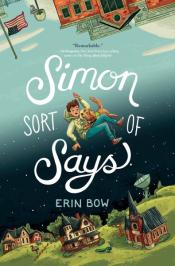
Simon Sort of Says by Erin Bow
Simon O’Keeffe’s biggest claim to fame should be the time his dad accidentally gave a squirrel a holy sacrament. Or maybe the alpaca disaster that went viral on YouTube. But the story the whole world wants to tell about Simon is the one he’d do anything to forget: the story in which he’s the only kid in his class who survived a school shooting.
Two years after the infamous event, twelve-year-old Simon and his family move to the National Quiet Zone—the only place in America where the internet is banned. Instead of talking about Simon, the astronomers who flock to the area are busy listening for signs of life in space. And when Simon makes a friend who’s determined to give the scientists what they’re looking for, he’ll finally have the chance to spin a new story for the world to tell.
From award-winning author Erin Bow, Simon Sort of Says is a breathtaking testament to the lasting echoes of trauma, the redemptive power of humor, and the courage it takes to move forward without forgetting the past.
Image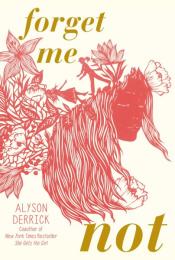
Forget Me Not by Alyson Derrick
A romantic ode to the strength of love and the power of choosing each other, against odds and obstacles, again and again.
What would you do if you forgot the love of your life ever even existed?
Stevie and Nora had a love. A secret, epic, once-in-a-lifetime kind of love. They also had a plan: to leave their small, ultra-conservative town and families behind after graduation and move to California, where they could finally stop hiding that love.
But then Stevie has a terrible fall. And when she comes to, she can remember nothing of the last two years—not California, not coming to terms with her sexuality, not even Nora. Suddenly, Stevie finds herself in a life she doesn’t quite understand, one where she’s estranged from her parents, drifting away from her friends, lying about the hours she works, dating a boy she can’t remember crushing on, and headed towards a future that isn’t at all what her fifteen-year-old self would have envisioned.
And Nora finds herself… forgotten. Can the two beat the odds a second time and find their way back together when “together” itself is just a lost memory?
Image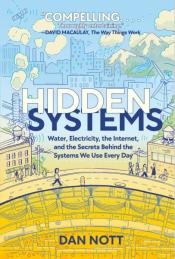
Hidden Systems: Water, Electricity, the Internet, and the Secrets Behind the Systems We Use Every Day by Dan Nott
We use water, electricity, and the internet every day--but how do they actually work? And what’s the plan to keep them running for years to come? This nonfiction science graphic novel takes readers on a journey from how the most essential systems were developed to how they are implemented in our world today and how they will be used in the future.
What was the first message sent over the internet? How much water does a single person use every day? How was the electric light invented?
For every utility we use each day, there’s a hidden history--a story of intrigue, drama, humor, and inequity. This graphic novel provides a guided tour through the science of the past--and reveals how the decisions people made while inventing and constructing early technology still affect the way people use it today.
Full of art, maps, and diagrams, Hidden Systems is a thoughtful, humorous exploration of the history of science and what needs to be done now to change the future.
Image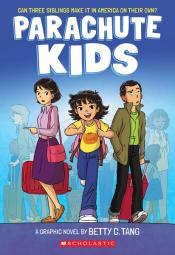
Parachute Kids by Betty C. Tang
Feng-Li can’t wait to discover America with her family! But after an action-packed vacation, her parents deliver shocking news. They are returning to Taiwan and leaving Feng-Li and her older siblings in California on their own. Suddenly, the three kids must fend for themselves in a strange new world― and get along. Starting a new school, learning a new language, and trying to make new friends while managing a household is hard enough, but Bro and Sis’s constant bickering makes everything worse. Thankfully, there are some hilarious moments to balance the stress and loneliness. But as tensions escalate―and all three kids get tangled in a web of bad choices―can Feng-Li keep her family together?
Image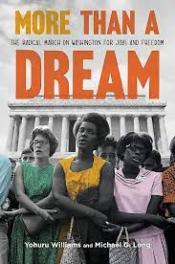
More Than a Dream: The Radical March on Washington for Jobs and Freedom by Yohuru Williams, Michael G. Long
Hailed as “an essential reeducation on one of the most consequential events in US history” by Ibram X. Kendi, this gripping middle-grade account offers a fresh look at the groundbreaking 1963 March on Washington for Jobs and Freedom by spotlighting the protest’s radical roots and the underappreciated role of Black women―includes a wealth of contemporary black-and-white photos throughout.
Six decades ago, on August 28, 1963, Dr. Martin Luther King Jr. delivered his iconic “I Have a Dream” speech during the March on Washington for Jobs and Freedom―a moment often revered as the culmination of this Black-led protest. But at its core, the March on Washington was not a beautiful dream of future integration; it was a mass outcry for jobs and freedom NOW―not at some undetermined point in the future. It was a revolutionary march with its own controversies and problems, the themes of which still resonate to this day.
Without diminishing the words of Dr. King, More Than a Dream looks at the march through a wider lens, using Black newspaper reports as a primary resource, recognizing the overlooked work of socialist organizers and Black women protesters, and repositioning this momentous day as radical in its roots, methods, demands, and results. From Yohuru Williams and Michael G. Long, the acclaimed authors of Call Him Jack, comes a classic-in-the-making that will transform our modern understanding of this legendary event in the fight for racial justice and civil rights.